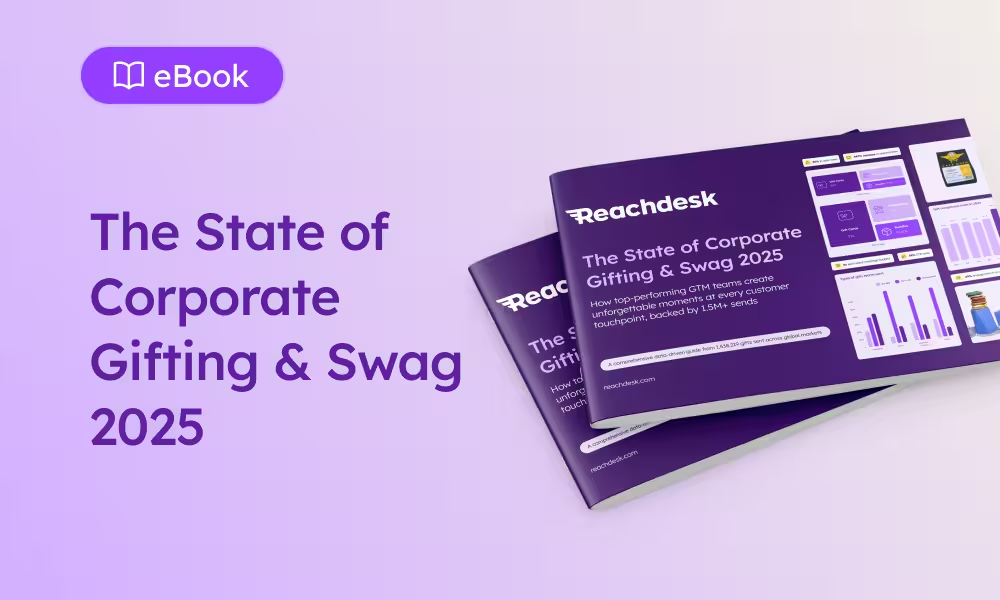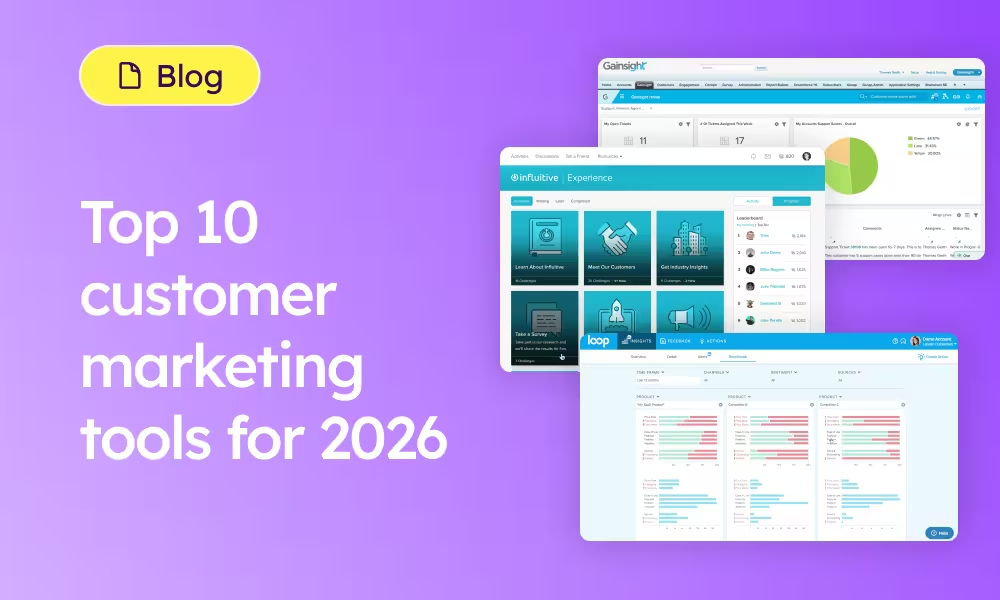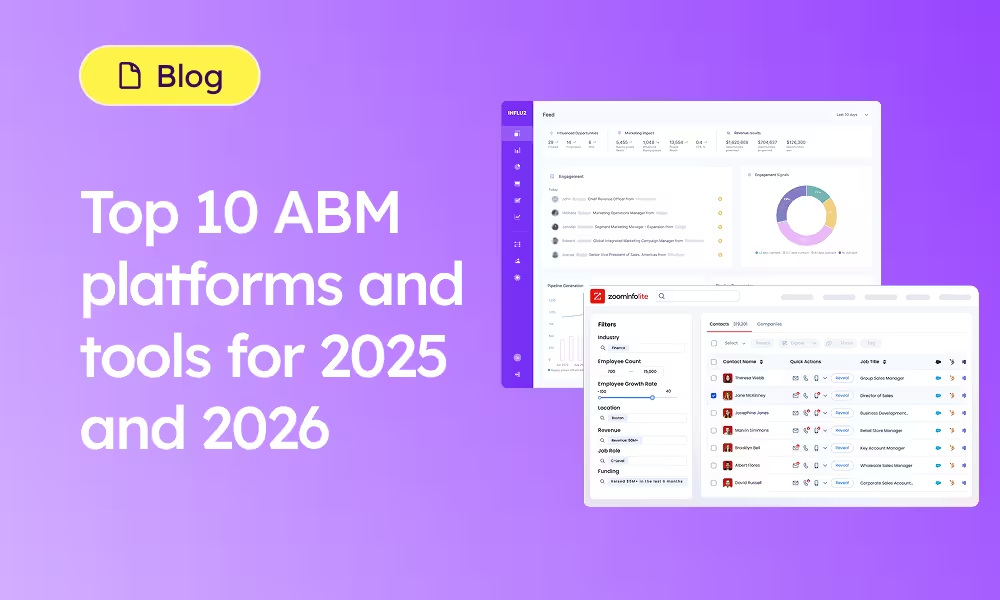One powerful platform for ROI-driven corporate gifting, swag, and engagement at scale.
It may surprise you to learn that when it comes to sales, there’s a chicken-related phrase for every occasion.
All good sales managers will remind you that you should never count your chickens until they’re hatched. Balancing a healthy pipeline with closing deals is a classic chicken and egg situation, and the chickens will definitely come home to roost for the salesperson who doesn’t.
But here on the Reachdesk IQ blog, we know the most important poultry-centric sales wisdom is not to put all your eggs in one basket.
Hold on, what is Reachdesk IQ?
Reachdesk IQ is our new data-focused blog series that we launched last month (you can read our first blog all about how to supercharge your close rates by boosting gift redemption here). Every month we use our data science team and the Reachdesk Insights tool to harness the data from the Reachdesk platform to help you take a smarter approach to gifting. We share tips backed by data to help you take your gifting strategy to the next level, no matter if you’re a Reachdesk power user or you’re just taking your first steps into sending gifts manually.
Back to eggs and baskets
So why is it important not to put all your eggs in one basket? Picture the scene: you’ve been working on a juicy opportunity and have built a great relationship with your internal champion. You found out a little about them and their interests and you’ve even sent them a thoughtful, relevant gift. Things are feeling good.
But just as it feels like you’ve got them in a position to buy, they start ghosting you. Your emails are going unread and your calls are being ignored. Turns out, they’ve taken a promotion to a whole different area of the business. Best case scenario, you’ve got to start over again with a different contact at the business, worst case: one of your competitors is already talking to someone else and has the jump on you.
How do you stop this from happening on your deals? Multi-threading.
The data has spoken: multi-threading works!
Research shows that more and more B2B buying decisions are made by a group or committee, rather than a single person. To give their deals an extra layer of protection, savvy salespeople build relationships with multiple contacts at the buyer organization. At Reachdesk, we know a gift always makes things better, so we wanted to find out what impact gifting has on a multi-threading strategy.
When we first dug into the numbers we looked at two different practices: multi-gifting, which is where two or more gifts are sent to one recipient, and multi-threading, which is where two or more gifts are sent to two or more recipients.
The data showed that when you send multiple gifts to a prospect, there is a 1.08x increase in win rate - not enormous, but still a welcome boost.
However, by sending gifts to multiple people in an opportunity, your win rate jumps by 1.29x, making it a hugely effective strategy in helping you close more deals.
Put simply: by taking more people with you on the journey, you give yourself a better chance of getting to the destination.
Does gifting to power work?
Multi-threading with gifting is not about sending gifts to everyone at the buyer organization that might have an interest in the deal. Sure, you could do that, but as we say here at Reachdesk: don’t send more, send better. So who should you be sending to?
We took a look at deals where a gift has been sent to a contact in a senior role (job title includes: VP/SVP, or Executive/C-suite), and found that if they are the sole recipient, you see a 1.07x increase in your win rate over sending to someone with no power. However, the real power comes when you are multi-threading, if at least one of your recipients is in a senior role we see an increase in the win rate of 1.17x.
So the data tells us that gifting to power works but sending a gift to a senior contact as well as gifting to your champion puts you in an even better position.
Who to gift to in the C-suite
Digging even further into the data, we found that there are optimal executives to gift to. The average close rate if an executive is gifted to is 41.9%, which coincidentally is almost exactly the same as when you gift to a CEO. Gifting to a COO or a CTO yields better results, with above-average close rates, while gifting to CFOs brings us in WAY below average.
An important caveat here is that while the data suggests that gifting to CFOs is a poor use of your budget, it is also possible that this is not a key buyer persona for the majority of our client base. If you sell something like accounting software and CFO is likely to be influential in the decision to buy, they are definitely someone you should think about gifting to.
What does it all mean?
While the data shows that you can make a big difference to your win rate when you combine multi-threading and gifting to power, it’s important to remember that this works best in the context of a proper engagement strategy.
The most effective gifting strategies are always going to be the ones that are relevant to your audience so bear this in mind before you write-off gifting to a particular role. If you can justify speaking to a senior contact in a prospect business because there is a reason for them to care about what you have to say then gifting can definitely help.
However, a Hail Mary send to the CFO of a company where you’re struggling to get traction selling something unrelated to finance is probably not going to make it more likely that you get a signed contract.
So what have we learned?
- The more the merrier - most buying processes involve a group of contacts, make sure you’re reaching out to more than just one.
- Gifting to power works - the higher up the pecking order, the better.
- Keep it relevant and thoughtful - random gifting to unengaged CFOs is not going to help.
- Avoid running around like a chicken with its head cut off at the end of the quarter - well thought out multi-threading and gifting to power is a winning combination.
Want to find out how you can use Reachdesk to grow your win rates? Get in touch.






.jpeg)



